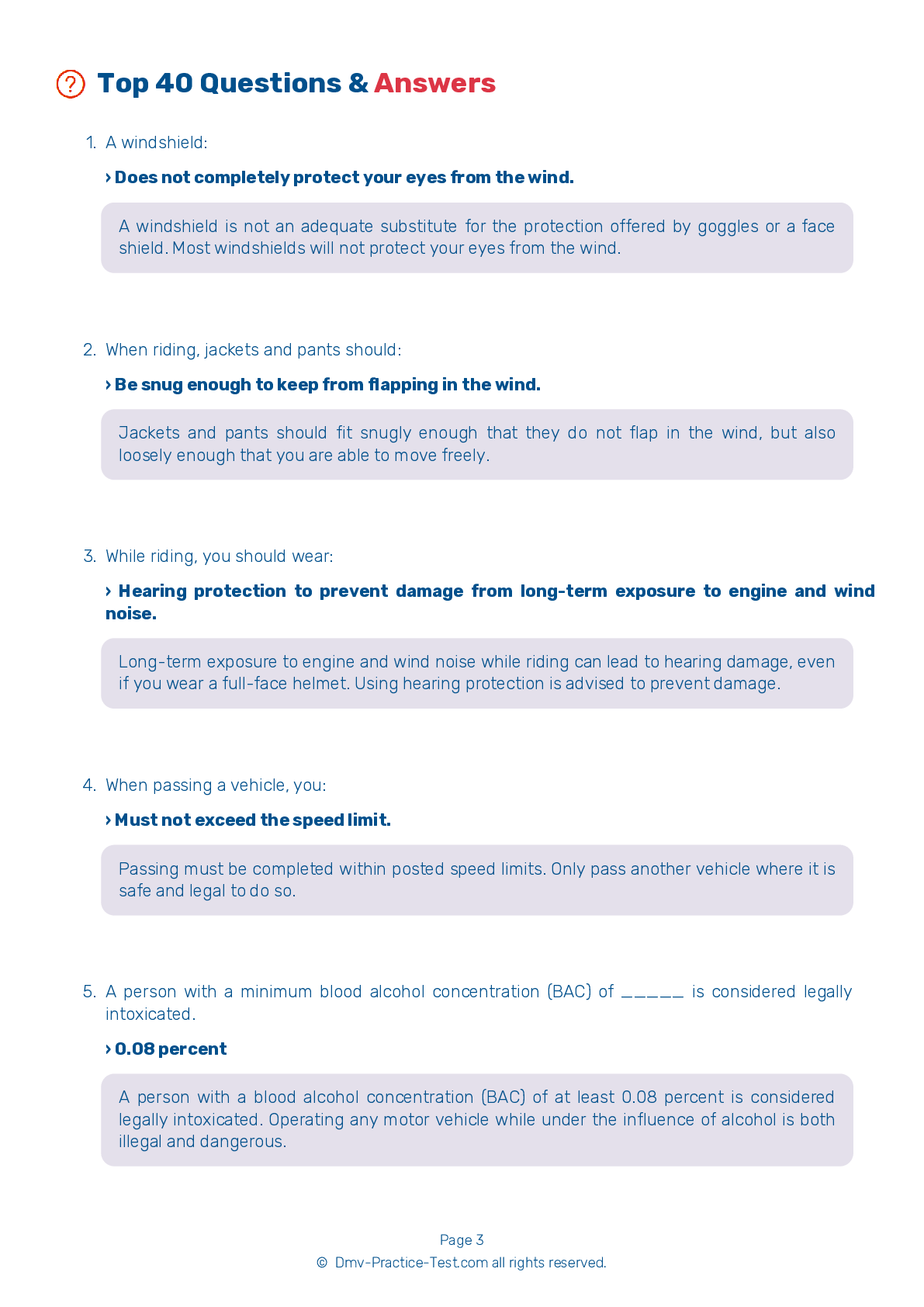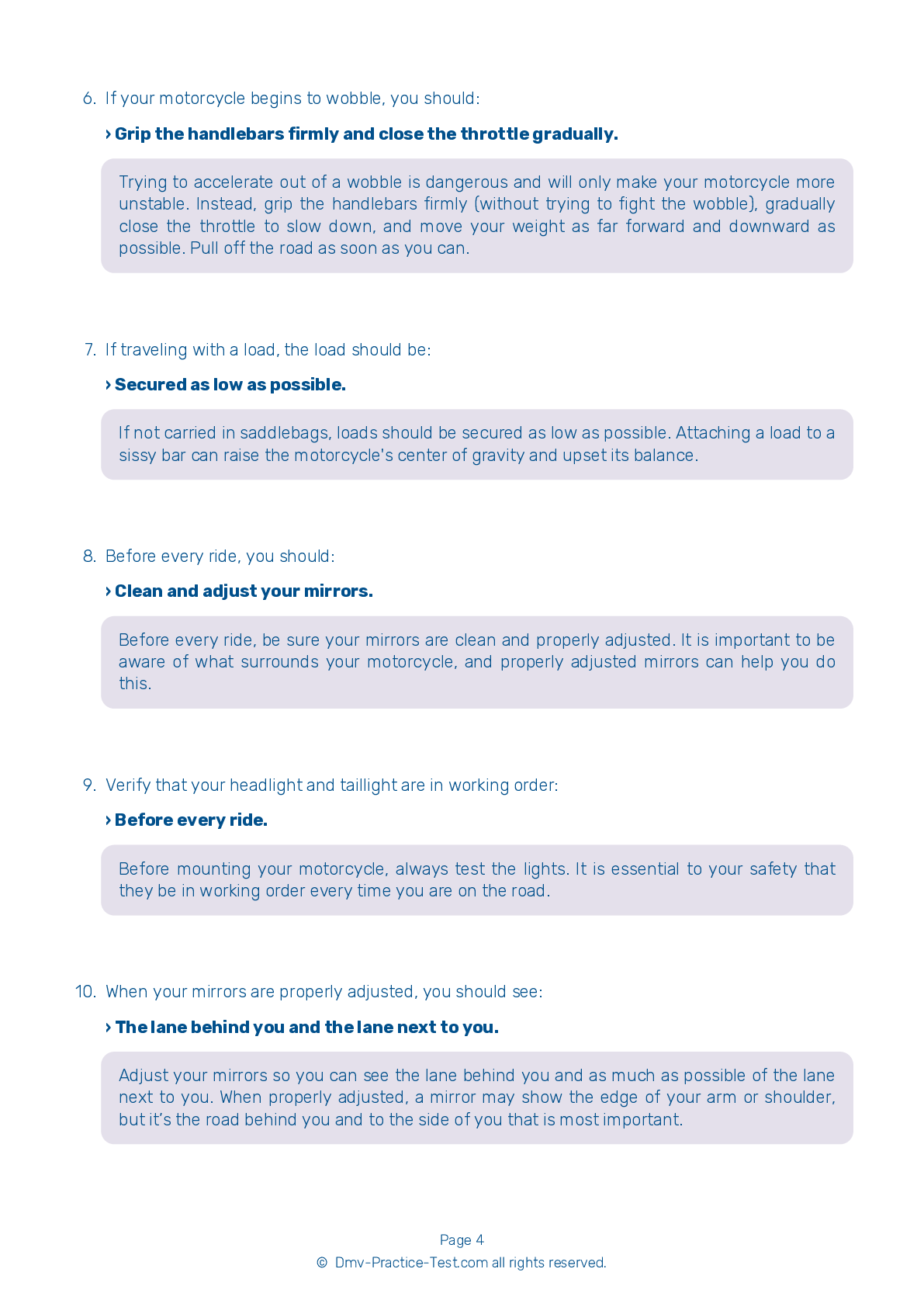Motorcycle Test | License OH 2025 | FREE Online Practice! #6 Page 4 of 5
Take this FREE motorcycle test (license in OH 2025) to check your knowledge of the road rules. To improve your results, download a motorcycle handbook online, study theory, and practice for free on our website. Still worried about how to get a motorcycle license in Ohio in 2025? Check our website for more sample tests, train as much as possible, and boost your grades!
25 . A wobble, or shaking of the front wheel and handlebars, may be caused by:
Most wobbles are caused by improper loading of the motorcycle, unsuitable accessories, or incorrect tire pressure.
26 . When a lead rider's right leg is extended, it means:
Signals are an important part of communication when riding in groups. When the lead rider's right leg is extended, it means there is a hazard in the roadway on their right side.
27 . A good way to handle tailgaters is to:
The best way to handle a tailgater is to change lanes and let them pass you. Speeding up may cause them to tailgate you at a higher speed, only increasing the danger.
28 . All of the following will lessen your chances of being involved in an accident, except:
To reduce your risk of being involved in a crash, you should remain alert and ready to react to any hazard. Identify hazards and decide the order in which you need to address the hazards. Always use your headlight to make yourself more visible and maintain an adequate space cushion around your motorcycle at all times.
29 . To stay safe on a long trip, you should:
To reduce the risk of fatigue on a long trip, dress to protect yourself against tiring elements, such as wind and rain. Limit yourself to no more than about six hours of riding per day and take a rest break at least every two hours. Avoid using artificial stimulants because they may cause extreme fatigue when they begin to wear off.
30 . In general, riders should:
Because road and traffic conditions are always changing, the safest lane position is also always changing. Choose the position that will maximize your space cushion and allow other drivers to see you most easily.
31 . To safely cross trolley tracks that run parallel to your lane, you should:
To safely cross trolley tracks or pavement seams running parallel to your lane, move to a lane position that will allow you to cross them at an angle of at least 45 degrees. Then, make a quick, sharp turn. If you try to edge across, the tracks or seam could catch your tires and throw you off balance.
32 . The front brake supplies approximately how much of a motorcycle's potential stopping power?
The front brake of a motorcycle is more powerful than the rear brake. The front brake supplies at least 70 percent of a motorcycle's total stopping power.
See the exact questions that will be on the 2025 Ohio DMV exam.
99.2% of people who use the cheat sheet pass the FIRST TIME
Jeneen was tired of paying $5/gallon. She got herself a scooter that required the motorcycle license. She studyed the motorcycle test cheat sheet and passed her test the next day!
Christopher tells us how he knew nothing prior to obtaining the motorcycle study guide, and he only got one question wrong because he clicked on the wrong answer by mistake.



